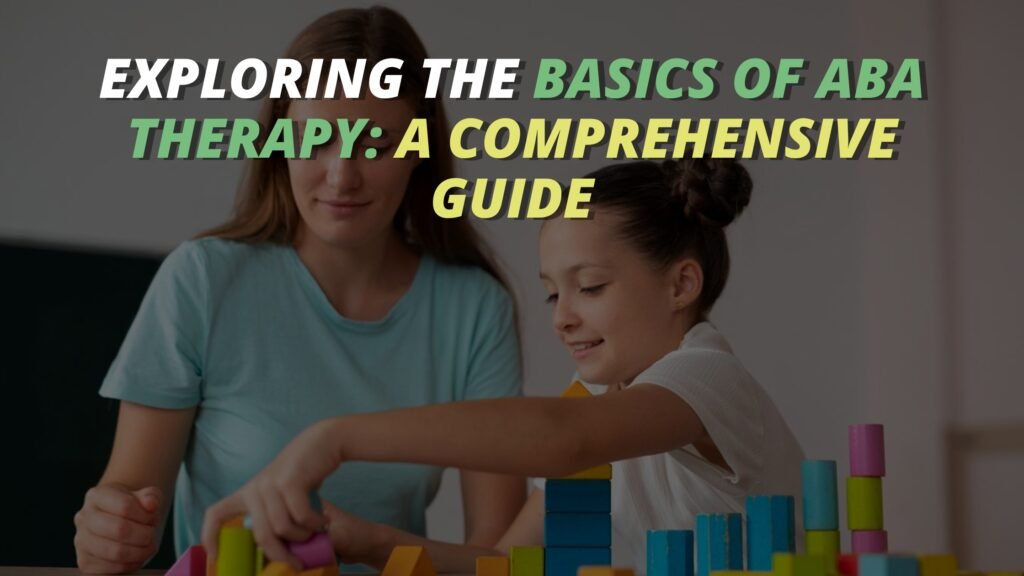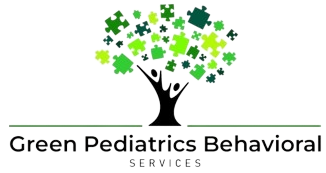
Applied Behavior Analysis (ABA) therapy is a powerful tool used to improve the lives of individuals with autism and other developmental disorders. This evidence-based approach focuses on understanding and changing behaviours to enhance communication, social skills, and learning abilities. In this blog, we’ll explore what ABA therapy looks like, how it helps, and its various applications.
What Does ABA Therapy Look Like?
ABA therapy is a structured, individualized program designed to meet the specific needs of each person. Here’s what a typical ABA therapy session might look like:
Initial Assessment
The therapy begins with a thorough assessment conducted by a certified behaviour analyst. This assessment helps identify the individual’s strengths, challenges, and specific goals.
Goal Setting
Based on the assessment, clear and measurable goals are established. These goals can range from improving communication skills to reducing challenging behaviors.
One-on-One Sessions
ABA therapy is usually conducted in one-on-one sessions between the therapist and the individual. These sessions can take place in various settings, including the in-home, school, or clinical environment.
Structured Activities
Sessions involve structured activities that break down complex tasks into smaller, manageable steps. Each step is practiced repeatedly to ensure perfection.
Positive Reinforcement
Positive reinforcement, such as praise, rewards, or favourite activities, is used to encourage desired behaviours. This approach helps motivate the individual and reinforces learning.
Data Collection and Analysis
Throughout the sessions, therapists collect data on the individual’s progress. This data is analyzed regularly to adjust the therapy plan as needed.
Parent and Caregiver Involvement
ABA therapy often includes training for parents and caregivers. This training helps them implement ABA techniques at home, ensuring consistency and maximizing progress.
How Does ABA Therapy Help?
ABA therapy helps individuals in several significant ways, including:
Improving Communication Skills
ABA therapy focuses on enhancing both verbal and non-verbal communication skills. Individuals learn to express their needs, understand instructions, and interact more effectively with others.
Developing Social Skills
Social interactions can be challenging for individuals with autism. ABA therapy teaches essential social skills, such as taking turns, sharing, and understanding social cues.
Reducing Problematic Behaviors
Challenging behaviors, such as aggression or self-injury, can be reduced through ABA therapy. Therapists identify the triggers for these behaviors and teach alternative, more appropriate responses.
Enhancing Learning Abilities
ABA therapy uses techniques that promote learning and cognitive development. This includes improving attention, memory, and problem-solving skills.
Increasing Independence
By teaching daily living skills, such as dressing, eating, and personal hygiene, ABA therapy helps individuals become more independent and self-sufficient.
What Does ABA Therapy Do?
ABA therapy works by applying the principles of behavior analysis to bring about meaningful and positive changes in behavior. Here’s what ABA therapy does:
Identifies Functional Behaviors
Therapists work to identify behaviors that are functional and beneficial for the individual, reinforcing these behaviors to make them more frequent.
Teaches New Skills
ABA therapy introduces new skills in a systematic way, ensuring that the individual can master each step before moving on to the next.
Generalizes Skills
ABA therapy focuses on generalizing skills across different settings and situations. This means that the individual can apply what they’ve learned in therapy to real-world environments.
Monitors Progress
Continuous monitoring and data collection allow therapists to track progress and make necessary adjustments to the therapy plan.
Involves the Family
ABA therapy often includes family members in the treatment process, providing them with the tools and strategies to support their loved one’s development.
What is ABA Therapy Used For?
ABA therapy is used for a wide range of applications, primarily to support individuals with autism and other developmental disorders. Some common uses include:
Autism Spectrum Disorder (ASD)
ABA therapy is widely recognized as one of the most effective treatments for autism. It helps individuals with ASD develop critical skills and reduce behaviors that interfere with learning and social interaction.
Developmental Delays
Children with developmental delays benefit from ABA therapy by learning essential skills and behaviors that enhance their overall development.
Behavioural Issues
ABA therapy addresses various behavioural issues, helping individuals learn appropriate ways to respond to different situations.
Learning Disabilities
ABA techniques can be applied to support individuals with learning disabilities, helping them improve their academic performance and learning strategies.
Communication Disorders
For individuals with communication disorders, ABA therapy focuses on developing effective communication skills, both verbal and non-verbal.
Who is ABA Therapy For?
ABA therapy is for anyone who can benefit from behavioural interventions to improve their quality of life. This includes:
Children with Autism
Early intervention with ABA therapy can significantly improve outcomes for children with autism.
Adults with Developmental Disorders
ABA therapy can also be beneficial for adults, helping them develop life skills and reduce problematic behaviors.
Families and Caregivers
ABA therapy supports families by providing them with strategies and techniques to assist their loved ones effectively.
Educators and Professionals
Teachers, therapists, and other professionals working with individuals with developmental disorders can benefit from ABA training to enhance their practice.
Conclusion
ABA therapy is a versatile and effective approach for helping individuals with autism and other developmental disorders achieve their full potential. From improving communication skills, reducing challenging behaviours, or enhancing overall development, ABA therapy offers valuable tools and strategies for making meaningful and lasting changes.
